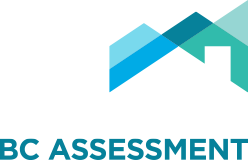British Columbia’s Assessment Act requires that every property owner receive a property assessment notice reflecting market values effective July 1 of the preceding year. Market value is the price an unencumbered property would sell for if a reasonable amount of time is allowed to find a purchaser.
Private and public appraisers use a number of generally accepted valuation approaches to develop market value estimates – direct comparison, cost and income. Each approach analyzes a property's highest and best use - the most probable use of a property that would return the highest value, considering legal, economic, and social factors.
Direct comparison approach
The direct comparison approach is based on the premise that the value of a specific property is set by the price an informed purchaser would pay for a comparable property, offering similar desirability and usefulness. This requires an understanding of all market variables, including location, property size, physical features and economic factors. Assessors may make adjustments, if required. For example, if an analysis of a property sold in May indicated that the overall market price for similar properties has moved as of July 1 of the previous year, an adjustment would reflect the sale price as of last July 1. Since the real estate market changes, the adjustment process is an important part of developing market-value indicators. The process of identifying and analyzing comparable property sales is repeated until a satisfactory range of value indicators for the subject property is established and a final estimate of value is possible.
Cost approach
The cost approach to property assessment is based on the premise that an informed purchaser will judge the value of a property by the market price of similar properties, and will also consider the cost of buying land with similar characteristics and constructing a new building. This assumes the cost of replacing the existing building plus the value of the land equals market value.
The steps in applying the cost approach include:
• estimating the site value (land and site improvements) through review of comparable sales;
• estimating the cost of replacing the existing building with one of similar usefulness (reflecting current building design and materials); and
• deducting all sources of depreciation, including physical deterioration (‘wear and tear’ on a building) and functional and economic obsolescence. Functional obsolescence is the reduced ability of the building to perform the function it was originally designed and built for. Economic obsolescence refers to external forces that affect the ability of the buildings to continue to perform, including changes in transportation corridors, new types of building design demanded by the market, etc.
The cost approach is most often used when the property being appraised is new or nearly new, where there are no comparable sales, or where the improvements are relatively unique or specialized.
Income approach
The income approach is used when appraising properties that trade based on income and an expected rate of return. The capitalized value of the income stream provides an estimate of the market value of the property.
The steps in applying the income approach are to:
- estimate potential gross income (PGI)
- The appraiser determines market rents by analyzing rents in both the property being assessed and in comparable properties in the neighbourhood. Market rents are applied to the subject property to determine the PGI.
- estimate effective gross income (EGI)
- The appraiser then makes allowances for vacancy and collection loss. These are deducted from the PGI to determine EGI.
- estimate net operating income (NOI)
- The appraiser then deducts total operating expenses, both fixed and variable, from the EGI to determine the NOI. Generally accepted appraisal practice is to not deduct mortgage interest from operating expenses, since it varies greatly from property to property.
- determine the market capitalization rate
- The appraiser analyzes capitalization rates from sales of similar properties and applies the market capitalization rate to the subject NOI to estimate the market value.
For more information on the property appraisal process, contact BC Assessment here.
Updated 04/2009
Disclaimer: Where information presented is different from legislation, legislation shall prevail.

